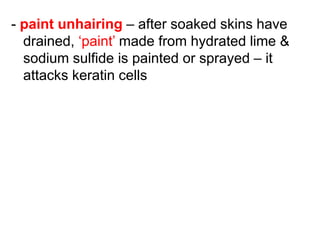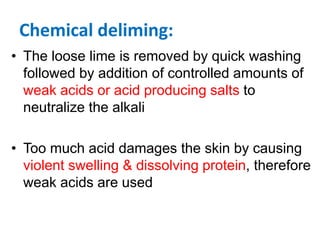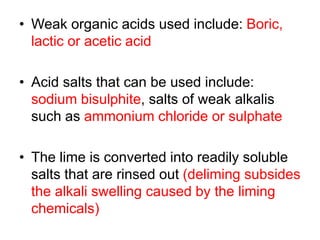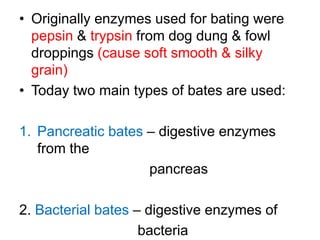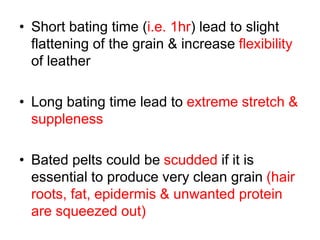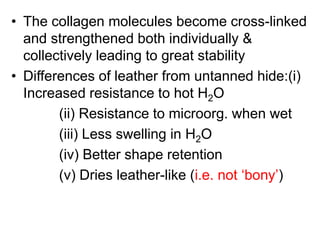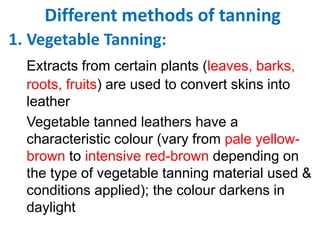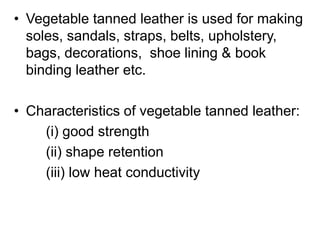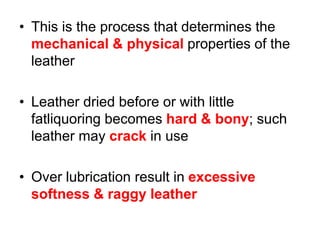The document summarizes the key steps in the hides and skins tanning process:
1. Beamhouse work includes soaking, liming, unhairing, fleshing, and deliming to prepare the hides.
2. Soaking rehydrates the hides and removes impurities. Liming uses chemicals to separate the hair and epidermis from the collagen.
3. Fleshing removes remaining flesh and fat. Deliming removes residual lime in preparation for tanning.
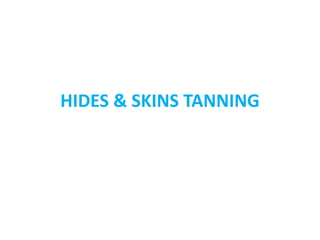
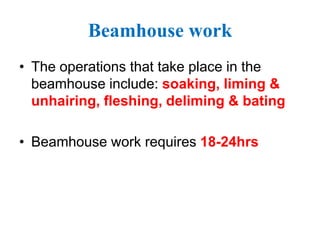











![• The first group of methods include:
- sweating [soaked skins hung up in a dark
humid room (22-27oC), to allow bacteria to
attack keratin cells of hair & epidermis]
- enzyme unhairing – enzymes that
preferentially attack cells at the base of
hair roots or epidermis are available](https://image.slidesharecdn.com/tanning-190305071235/85/Tanning-14-320.jpg)
